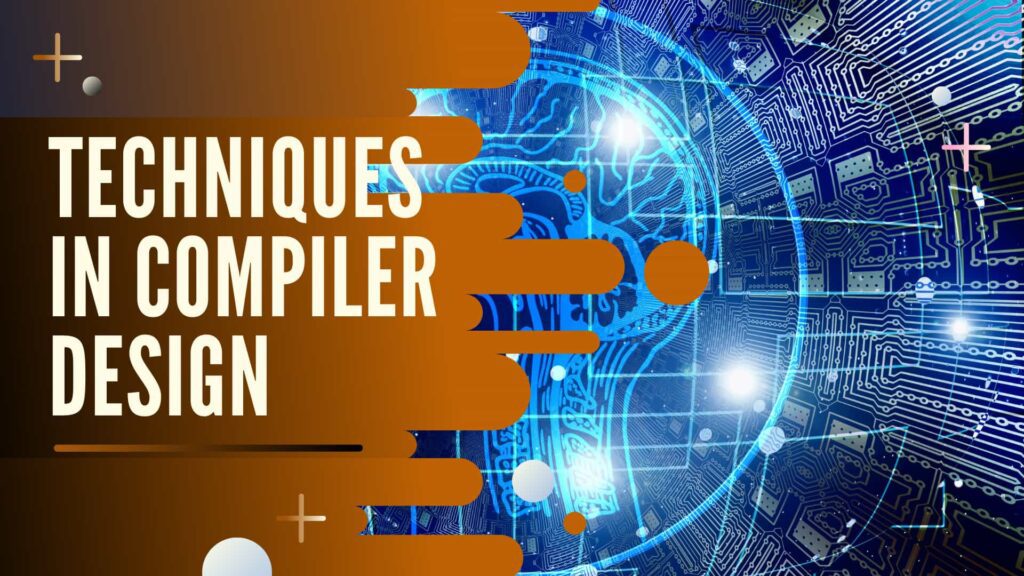Compiler Design stands as the architectural backbone of programming languages, serving as the ground between mortal-readable law and machine-executable instructions. In the realm of software engineering, understanding compiler design is akin to unravelling the inner workings of the digital macrocosm. In this extensive blog post, we embark on a trip through the complications of compiler design, exploring its abecedarian principles, factors, optimization ways, and real- world operations.
What is Compiler Design?
Compiler design is the process of rephrasing high-position programming languages into machine law or executable binaries. It involves a series of intricate way, including verbal analysis, syntax analysis, semantic analysis, law generation, and optimization. The primary ideal of compiler design is to transfigure source law written in a mortal-readable format into an effective and executable form that can be understood and executed by a computer’s tackle.
Key Components of Compiler Design
Lexical Analysis: Verbal analysis, also known as scanning, involves breaking the source law into commemoratives or lexemes, similar as keywords, identifiers, drivers, and punctuation symbols. verbal analyzers use regular expressions and finite automata to fete and categorise commemoratives grounded on predefined verbal rules.
Syntax Analysis: Syntax dissection, also known as parsing, involves analysing the structure of the source law to ensure that it conforms to the syntax regulations of the programming language. Syntax analyzers exercise environment-free principles and parsing algorithms, similar as LL(1), LR(1), and LALR(1), to induce a parse tree or ideal syntax tree (AST) defining the syntactic structure of the law.
Semantic Analysis: Semantic analysis involves checking the meaning and correctness of the source code by performing type checking, scope resolution, and semantic validations. Semantic analyzers ensure that the code adheres to the semantics of the programming language and detects errors or inconsistencies that cannot be captured by syntax analysis alone.
Code Generation: Code generation involves rephrasing the moderate representation(IR) of the source law into engine law or assembly language instructions that can be executed by the prey tackle. Code creators exercise colourful ways, similar as tree traversal, instruction election, and register allocation, to induce optimised and effective law.
Optimization: Optimization involves enhancing the interpretation, size, and effectiveness of the generated law by applying optimization ways, similar as constant folding, circle unrolling, and dead law elimination. Optimization passes, breakdowns the IR and apply metamorphoses to reduce prosecution time, mind operation, and dynamism consumption while conserving the semantics of the law.

Optimization Techniques in Compiler Design
Peephole Optimization: Peephole optimization involves analysing fragile, localised sections of generated law, known as “peepholes” and applying optimization ways to exclude spare or hamstrung instructions. Peephole optimizers examine sequences of instructions and replace them with more effective coequals, performing in better law quality and interpretation.
Loop Optimization: Loop optimization ways are cast to ameliorate the interpretation of circles by reducing circle above, barring gratuitous calculations, and optimising circle control structures. Loop optimizers assay circle structures, dependencies , and data access patterns to identify optimization openings, similar as circle unrolling, circle emulsion, and circle-steady law stir.
Data Flow Analysis: Data inflow dissection ways assay the inflow of data through the program and identify dependencies, connections, and openings for optimization. Data flow analyzers construct data flow graphs and achieve colourful breakdowns, similar as reaching delineations, residue variables, and constant propagation, to optimise mind operation, register allocation, and law prosecution.
Inline Function Expansion: Inline function expansion involves replacing function calls with the factual function law at the call point to exclude the outflow of function incantation. Inline expansion improves law position, reduces function call above, and enables further optimizations, similar to circle unrolling and constant propagation.
Register Allocation: Register allocation ways aim to minimise the use of memory accesses by efficiently allocating registers to variables and intermediate values. Register allocators assay variable continuances, operation patterns, and dependencies to assign registers stoutly and optimise register operation across different program reaches.
Real-World Applications of Compiler Design
Programming Languages: Compiler design is essential for the development of programming languages, enabling inventors to produce compilers that restate high- position language constructs into machine law. Popular programming languages, similar as C, C, Java, and Python, calculate on sophisticated compilers to transfigure source law into executable binaries.
Operating Systems: Compiler design plays a pivotal part in the development of operating systems, enabling the compendium of system software, device motorists, and kernel modules. Operating system kernels, similar as Linux, Windows, and macOS, use compilers to restate system law written in high- position languages, similar as C, into machine law that can interact with tackle and manage system coffers.
Bedded Systems: Compiler design is essential for the development of bedded systems, similar to microcontrollers, IoT bias, and bedded software operations. Bedded systems compilers restate high- position law written in languages like C and assembly into optimised machine law acclimatised to the constraints of bedded tackle platforms.
Web Development: Compiler design is decreasingly applicable in web development, particularly with the rise of web assembly (Wasm) and Just-In-Time (JIT) compilers. Web assembly enables inventors to collect high-position languages, similar as C, C, and Rust, into effective and movable bytecode that can run in web cyber surfers, enabling performance- ferocious operations, similar as gaming and multimedia, to run seamlessly on the web.
Conclusion
In conclusion, compiler design stands as a testament to the imagination and complexity of software engineering, serving as the bedrock upon which ultramodern computing systems are erected. From the creation of programming languages to the optimization of law prosecution, compiler design shapes the digital geography and empowers inventors to unleash their creativity and invention. As technology continues to evolve and calculating systems come increasingly sophisticated, the significance of compiler design will only grow, paving the way for new advancements, improvements, and possibilities in the ever- expanding realm of software development.




